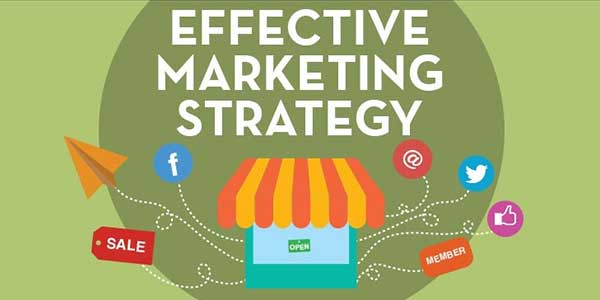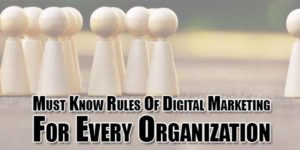
A well-thought-out effective marketing strategy articulating how a company plans to pursue all possible channels of client interest is helpful for businesses of all sizes. Product, price, place, promotion, people, and presentation are the “6 Ps” that underpin any profitable marketing strategy.
Efficiently integrating the 6 Ps of marketing can be the basis for a successful expansion plan. Businesses can accomplish the following with the help of the 6 Ps:
- Make a valuable product or service that people want.
- Market the service or product at a price that will attract customers.
- Find the best place to sell the product or service.
- Maximize the effectiveness of promotions that attract attention.
- Getting in touch with the proper people is essential if you want your marketing efforts to succeed.
- Create a visually beautiful and informative presentation to draw in customers.
Table of Contents
The 6 Ps Of Marketing: What Are They And How Do They Drive Sales?
In marketing, the 4 P’s (product, price, place, and promotion) have been around since the 1950s. Advertising professor Neil Borden popularized the 4Ps as a basis for efficient product marketing with the publication of “The Concept of the Marketing Mix” in 1964.
Leading multinational corporations and local mom-and-pop shops use the 4 P’s of marketing because they are tried and actual ideas that continue to impact the marketing mix. To this day, they are still an essential part of any effective advertising plan. However, digitalization has added two new components to the classic marketing mix: people and presentation.
How Do The 6 Ps Of Marketing Contribute To Increased Revenue?
- Product: whatever it is that’s being marketed. Sales can be boosted by responding to a market opening with a timely product that satisfies customers’ needs.
- Price: A customer’s out-of-pocket investment in a compelling price plan ensures that people are inclined to acquire the goods, producing sales for the company.
- Place: The location where the goods are sold. The proper arrangement of merchandise can increase sales, whether in a physical store, an online shop or an app.
- Promotion: Marketers utilize many promotional strategies to get the word about their products. The purpose of advertising is to pique the curiosity of potential buyers so that they will investigate the product further and, perhaps, make a purchase.
- People: These are the men and women on both ends of a business transaction who must interact with one another during the marketing process. Employees like salespeople and customer service representatives influence customers’ opinions, and customers’ opinions are used to enhance the business or product. The degree to which both external and internal factors interact affects the outcome.
- Presentation: Product presentation refers to the product’s outward appearance in the marketplace. How a product is presented to a customer (via packaging and advertising) can influence the customer’s ultimate choice to purchase the product.

An Explanation Of The “6Ps” Of Marketing:
Each “P” aids in answering critical marketing strategy questions.
- What is the company selling, or what is the product or service?
- How much are people willing to pay?
- Where may people purchase this item/service?
- What kind of promotion or advertising will pique consumers’ interest?
- Who will buy it? Who is going to be responsible for making sales?
- How does the buyer perceive the offering?
Services And Products:
Many enterprises rely on their products as their mainstay. Those who don’t sell goods typically sell some service. Companies sometimes specialize in more than just one thing; for example, a car dealership might also offer repair services in addition to selling cars.
A company needs to learn what its customers want before giving it to them. Identifying potential market openings is an integral part of their study. To do so, one can analyze the competition, research the services and products offered by existing companies in the industry, and brainstorm ideas for new offerings.
Developing successful products and services requires companies to ask the right questions.
- How much of a market do you think this product has? Some goods and services do well by addressing specific problems experienced by a subset of the population, while others appeal to a broader group of people. If businesses can build a core group of loyal clients, they can expand their reach to a broader audience.
- How can you know what kind of product or service will appeal to consumers? Sometimes a company will find an opening in the market that no existing product or service is addressing, which is an excellent opportunity for creativity and growth.
- Who holds the lion’s share of the market? It can be daunting to enter a market where just one or two companies hold sway. However, learning which companies hold the most significant market shares might reveal insights into the commodities consumers value most. Information like this might be invaluable to a company looking to break into a new market.
- Is there a need for this product or service in the market? Is it a consumable that wears out over time and has a built-in customer base because of its requirement for regular replacement? What other services or accessories can guarantee continuing consumer engagement if the product is a one-time buy or has an extended lifespan?
- Where does the market have the most pain? There needs to be more than existing products to relieve customers’ pressing problems. A business should keep these requirements in mind while it creates a new product or service.
- What kinds of goods and services are already available? It might take much work to gain traction in a crowded marketplace. Companies might create something new after surveying the market for similar products.
After developing a product or service, organizations should conduct market research to gauge its viability in the marketplace. Can it be made public at this time? Do people buy the product because they understand what it does? Is there a ready market for this item?
A product’s launch strategy often includes a customer education component to help people understand the product’s function. Describing a product’s or service’s benefits is a crucial first step. Product launch plans should also include tactics for educating salespeople (internal or external) on the value of the company’s goods.
What characteristics make a product description successful? Take into account the following when writing descriptive text:
- Benefits: The value of a service or product to a consumer is only sometimes apparent at first.
- Attributes: Specific features and benefits of a product or service are highlighted, and the product’s or service’s intended use is explained.
- Uniqueness: Useful in setting apart the product from similar ones on the market
The Role Of Pricing Strategies In Marketing:
Competitive pricing is a crucial factor in determining a product’s marketability. Firms need to strike a balance between maximizing profits and serving customers’ financial needs. Several variables affect which price tactics in marketing are most successful.
- Customer Behaviour: To price products or services based on what consumers are willing to pay, taking into account differences in demand and other factors, is known as consumer-based pricing.
- Cost and Margin: For a business to turn a profit, the “profit margin” (the amount of money earned from sales minus the amount of money spent) must be greater than zero.
- Market competitors’ prices: The optimal selling price of any given good or service is established by the market. When consumers see a high price tag concerning the value they receive, they tend to pass on that product. Finding an attractive and competitive price requires some research into similar products.

7 Ways To Increase Revenue Through Pricing:
You should attract customers to your goods or service thanks to your price strategy. Seven effective pricing tactics that will assist you in maximizing your sales potential:
- Economy Pricing: Economy pricing describes a business strategy in which items or services are priced inexpensively to generate high sales volume but with poor profit margins.
- Competitive Pricing: A business with competitive pricing researches its nearest competitors and then sets its price at or below its rivals.
- Captive Pricing: The term “captive pricing” is used when the ideal value of a “core product” depends on the purchase of “accessory products.” The goal of this tactic is to increase exposure for the company’s brand and ultimately lead to more sales.
- Bundle Pricing: One pricing tactic is called “bundle pricing,” selling a collection of items or offerings at a discounted rate by bundling them together instead of selling them separately.
- Penetration Pricing: By offering enticingly low prices (known as “penetration pricing”), companies can steal clients from their rivals and increase their market share.
- Price Skimming: For a quick profit, some businesses use a pricing strategy called “price skimming,” which starts with inflated prices and then progressively drops them using promotions and other price cuts.
- Psychological Pricing: Psychological pricing aims to increase revenue by appealing to consumers’ emotions. Offers and promotions such as “buy one, get one free” and price reductions of a few cents on items priced at a whole dollar are examples of this tactic.
Place In Marketing:
The location of a store’s point of sale is crucial to any product’s success. A customer’s “place” of purchase is the location where the product is available for purchase.
Traditional retail outlets have been the primary distribution channels for mass-market goods like footwear and consumer electronics. Many stores these days only exist online.
Either they have websites where people may buy their wares directly from them, or they use marketplaces like Etsy and Amazon to sell their things. The purchased items are subsequently brought to the doorsteps of the respective customers.
Products should be displayed where buyers can see and purchase quickly and simply. This may entail using well-planned window displays and in-store signage at brick-and-mortar establishments. Besides storefronts like Walmart and Target, product placement may also be seen in television ads and television series.
The success of online stores hinges mainly on the ease with which customers can browse and search for products. Beyond a company’s website, SEO is a significant factor in how high a product ranks in a search engine like Google. Search engine optimization (SEO) employs keywords to strategically position products near the top of search results, where customers are more likely to see them.
Promotion In Marketing:
One of the most efficient ways to entice buyers’ attention and win their business is to highlight the product’s or service’s positive aspects. Recognizing one’s intended audience is a vital first step in any advertising or marketing campaign. Business owners can increase sales by targeting the right audience with the right message after determining who could be interested in their product or service.
The traditional marketing toolbox is extensive, from handouts to magazine ads to strategic alliances and public relations. Traditional promotions now serve as a backbone for what has become marketing’s primary promotion medium: digital promotion. According to a poll of CMOs conducted by Gartner in 2020, digital channels attracted the majority of marketing spending.
It’s best to combine traditional methods with new media strategies to increase the impact of an advertising campaign. The following marketing tactics combine traditional methods with those made possible by the internet to reach consumers and produce revenue.
- Social Media: The term “social media” describes any online platform that facilitates the rapid production and distribution of user-generated content. Using influential people to disseminate information about a product or service is a common strategy in social media marketing. Facebook, Instagram, Twitter, and YouTube are popular social networking sites.
- Ads: Advertising is a time-honored method of promoting a product or service by paying to have one’s message broadcast to the audience of a news source. Various digital advertising is available today, from interactive films to in-app sponsorships.
- Email Marketing: One of the earliest forms of digital advertising, email marketing (i.e., sending out mass emails) is still quite effective at reaching potential and existing clients. Electronic mail campaigns usually try to persuade potential buyers to buy and create brand loyalty.
- Public Relations: Releasing positive information about a company and its offerings to influential parties, such as newspapers with a large readership or social media personalities with a sizable following, is the goal of public relations. The objective is to stimulate interest and change people’s minds.
- Content Marketing: The fundamental goal of content marketing is to generate relevant and exciting content that target audiences naturally share, thereby disseminating marketing messages without traditional paid advertising. You can generate interest in a product or company without the high expenses of traditional advertising through viral content such as memes, videos, and social media posts.
- Contests: Sweepstakes and giveaways are two contests you can use to gather contact information from potential customers. Competitions have long been used as a way of advertising, but they have recently caught on in the realm of online marketing as well.
- Surveys: With the help of customer surveys, companies can learn how to better tailor their wares to the wants and needs of their clientele.
- Promotions at the point of sale (POS): These displays, typically located near the cash registers, are meant to get customers interested in additional products, even if they weren’t their original intention. This tactic can significantly boost revenue during the appropriate seasons or around the holidays. Customers who shop online can also benefit from deals offered at the point of sale by automatically applying such offers to their digital shopping carts.
- Customer Appreciation Events: By holding customer appreciation events, companies can show their patrons how much they value them by providing them with freebies, discounts, and other enticements. The primary objective is to increase loyalty among existing customers.
- Rewards for referring new customers: This method uses the widespread influence of word-of-mouth advertising by rewarding repeat buyers with special savings whenever they refer the product to their social networks. Customers are more inclined to contemplate a purchase after hearing positive feedback from a friend or colleague who has already used the product.
People And Communities In Marketing:
The following P in the marketing mix is people or the product’s target audience. Businesses frequently interact with third parties, such as clients and suppliers. Workers in this field have one primary goal: bringing in new customers from outside the firm.
The internal personnel of a firm, including production employees, managers, customer service representatives, salespeople, and support staff, are necessary for the successful outcome of the marketing mix. You can trace business attraction and retention directly to the attitudes and actions of these key personnel.
Employees who interact directly with customers and those involved in the creation, shipment, and final delivery of a product or service all play a role in the success or failure of the firm.
The strategy focused on people includes seeking out and employing those most likely to add value to the company.
Attracting the best and brightest employees requires a concerted effort on the part of businesses to market themselves effectively to attract them as job seekers. A company’s marketing strategy, operations, and reputation can benefit from a well-hired team.
The Presentation:
Sales success is tied to presentation skills even when a product or service is superior to the alternatives. The sixth P of marketing considers the product’s visual appeal and whether or not it effectively conveys the brand’s values.
Designers, creatives, and other professionals involved in presenting items should determine the type of customers the company hopes to attract and then create a presentation that speaks specifically to them.
Critical components of a compelling presentation include:
- Marketing: How do consumers respond to your brand? What emotions do people have when they think of your company? A consumer’s optimistic impression of a brand can be a powerful force.
- Packaging: The first impression of every product is formed by its packaging. A product on a store’s shelf faces hundreds of similar products. Packaging that stands out from the competition is a surefire way to increase sales.
- Messaging: What a company wants its customers to know about itself, its brand, and its products are called its “message,” and it is the emphasis of messaging. In addition to emphasizing a product’s most substantial selling aspects, messaging can communicate the company’s core principles.
Services and products are more likely to be purchased if they are presented well. The following materials provide insight into the function of product presentation within the context of marketing strategy:
According to Forbes’ “The Importance of Branding in Business,” the public’s impression of a company can be significantly influenced by its presentation and branding, which can increase its credibility and attract new consumers.
Note: Others P’s, such as process and positioning, may be added to the marketing mix model in other iterations. The term “process” defines the whole work that goes into creating and promoting a product, from initial ideation to distribution—the positioning of a product, its brand, and its advantages in the consumer’s mind.
How To Tailor The “6 Ps” Of Marketing To Your Company?
As time has passed, much has altered from when the 4 P’s of marketing were first established. The creation, display, sale, and distribution of goods are all being altered by recent digital innovations.
When it comes to advertising, there is no one-size-fits-all solution. Businesses must first determine the worth of their brands and products and then develop the most effective strategies, methods, and delivery mechanisms to spread their messages to attract customers. To do so successfully, you must first assess the market’s requirements.
Businesses should have a firm grasp of the 6 P’s of marketing before embarking on the strategy development process. Knowing the most important aspects of marketing will allow them to create marketing strategies specific to their company and effectively communicate the value of their goods and services to potential clients.

 About the Author:
About the Author:
















Be the first to write a comment.